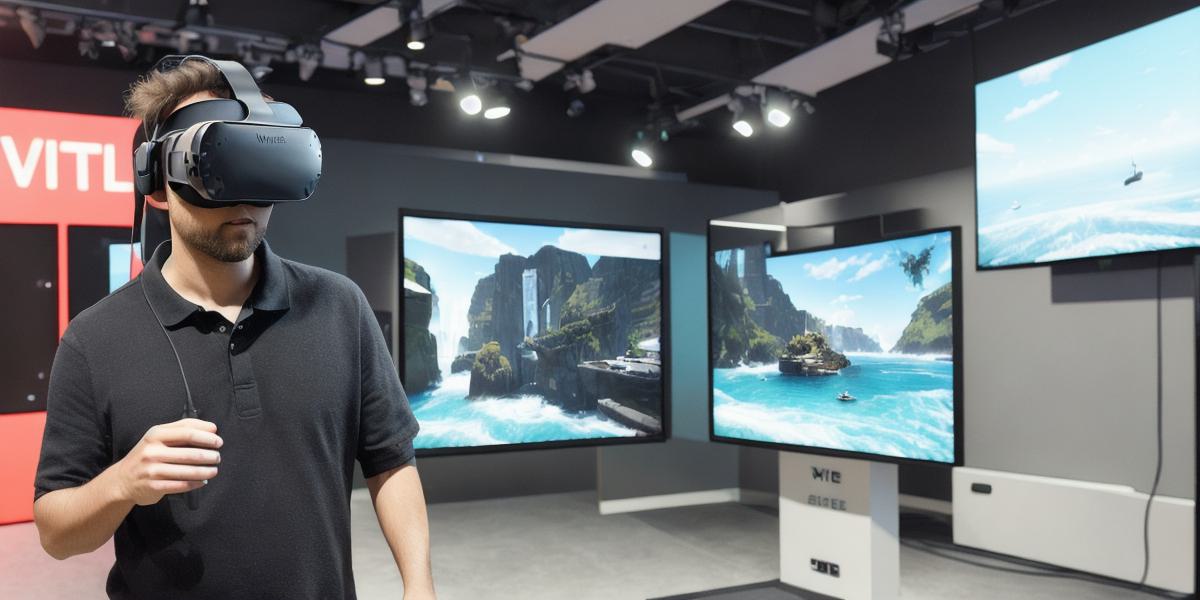Introduction:
Virtual reality (VR) and simulated environments have been around for several years, but they are becoming increasingly popular as technology advances. Both technologies offer immersive experiences, but there is a debate on which one offers a more immersive experience. In this article, we will compare VR and simulated environments to determine which one offers the most immersive experience.
Virtual Reality:
Virtual reality is an artificial environment that creates an illusion of being in a real-world environment. It uses sensors and computer algorithms to track the user’s movements and adjust the environment accordingly. VR has been used in gaming, education, and healthcare industries. One of the main advantages of VR is its ability to create a highly immersive experience.
For instance, in gaming, VR allows players to feel as if they are part of the game world, which enhances their overall gaming experience. In education, VR can be used to simulate real-world scenarios, such as historical events or natural disasters, allowing students to learn and understand complex concepts in a safe environment.
Simulated Environments:
Simulated environments are computer-generated environments that mimic real-world environments. They are created using 3D modeling software and can be customized to meet specific needs. Simulated environments have been used in industries such as architecture, engineering, and product design.
One of the main advantages of simulated environments is their ability to accurately replicate real-world environments. For example, architects can use simulated environments to test their designs before building them, which saves time and money. Engineers can also use simulated environments to test their products before launching them in the market, which reduces the risk of product failure.
Which Offers a More Immersive Experience?
It is difficult to say which technology offers a more immersive experience as it depends on the specific application. However, virtual reality generally offers a more immersive experience because it can create a highly realistic environment that engages the user’s senses and creates an illusion of being in a real-world environment.
On the other hand, simulated environments are ideal for industries that require accurate replication of real-world environments, such as architecture and engineering. These environments allow professionals to test their designs and products before launching them in the market, which reduces the risk of failure.
Summary:
Virtual reality and simulated environments both offer immersive experiences, but they are suited for different applications. Virtual reality is ideal for gaming and entertainment industries, while simulated environments are ideal for industries that require accurate replication of real-world environments. Both technologies have their advantages, and the choice of which one to use depends on the specific application. Ultimately, both VR and simulated environments can enhance our understanding of the world around us and create new opportunities for innovation and growth.
FAQs:
- What is virtual reality?
Virtual reality is an artificial environment that creates an illusion of being in a real-world environment. It uses sensors and computer algorithms to track the user’s movements and adjust the environment accordingly. - What are simulated environments?
Simulated environments are computer-generated environments that mimic real-world environments. They are created using 3D modeling software and can be customized to meet specific needs. - Which technology offers a more immersive experience?
It is difficult to say which technology offers a more immersive experience as it depends on the specific application. Virtual reality generally offers a more immersive experience because it can create a highly realistic environment that engages the user’s senses and creates an illusion of being in a real-world environment. - What are some examples of industries that use VR and simulated environments?
Virtual reality is used in gaming, education, and healthcare industries. Simulated environments are used in architecture, engineering, and product design industries.
